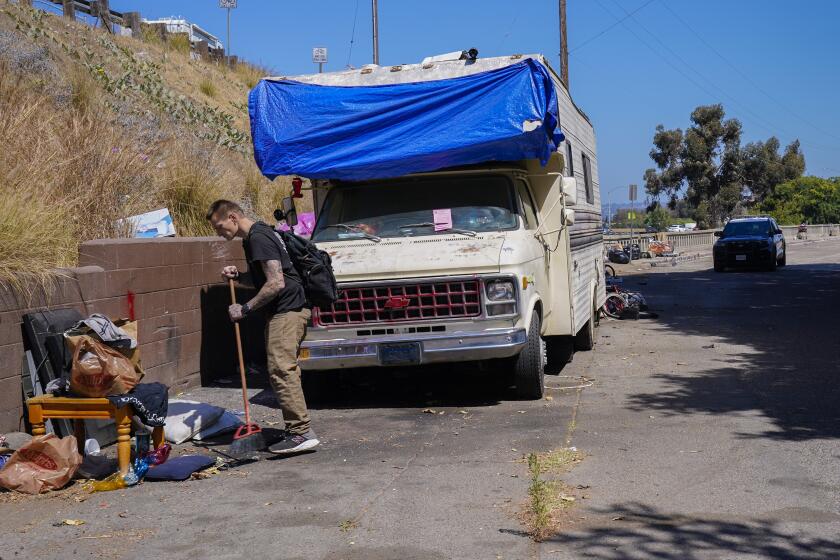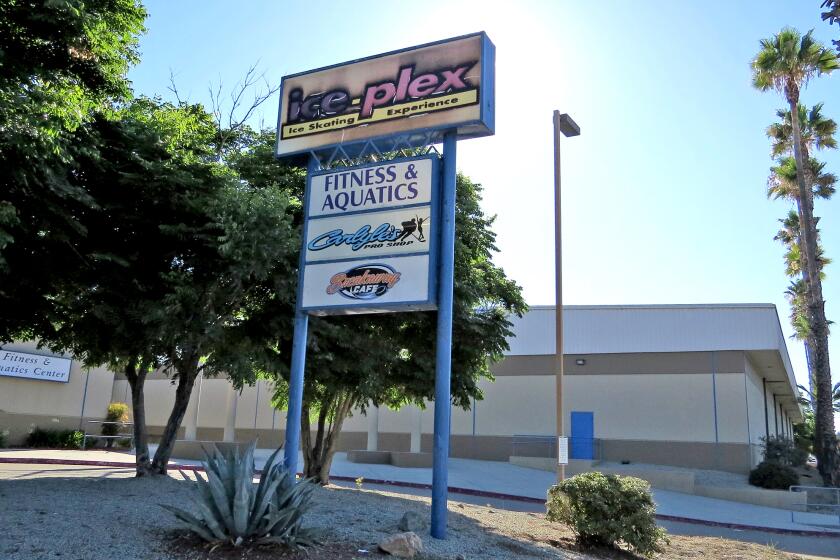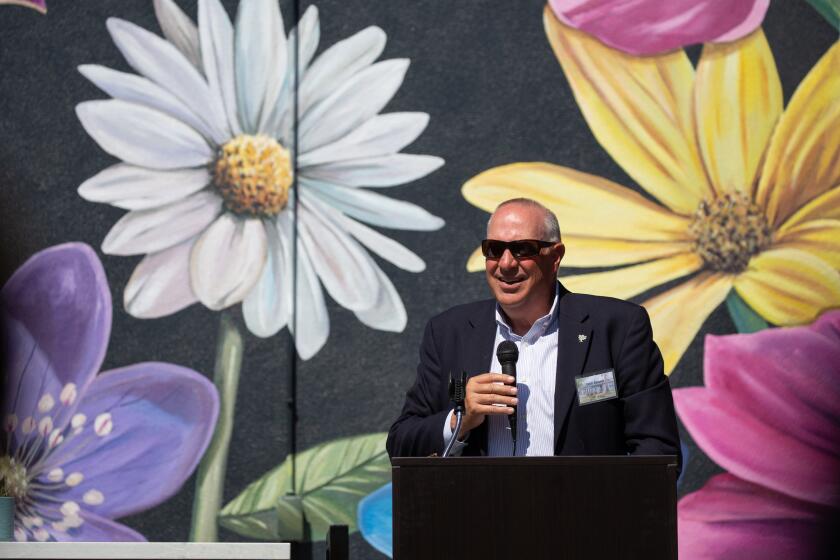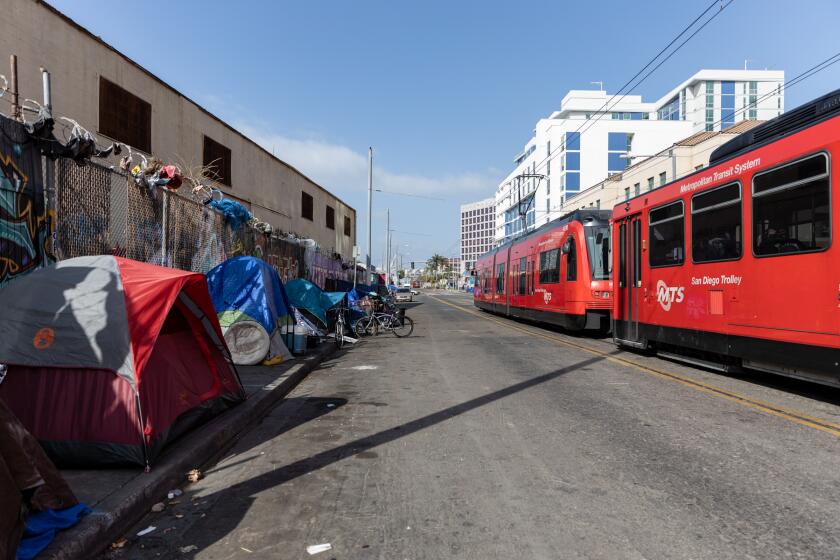Who are the homeless?
There’s lots of questions about the homeless and we set out to answer them
This is the first in an occasional series providing answers to commonly asked questions about the homeless.
Homeless people in San Diego are sober, sane, addicted, mentally unstable, veterans, young, old and of many different races.
The Regional Task Force on the Homeless conducts a count of homeless people each January as one of the requirements for funding from the U.S. Department of Housing and Urban Development.
This past year’s count showed 8,669 homeless people in San Diego County, a slight drop from the 8,742 people counted last year.
Of those, 3,729 people were in shelters and 4,940 were unsheltered.

The data isn’t just a headcount. In an effort to get a better understanding of the homeless population, communities that participate in the nationwide point-in-time count have surveyed people in the count over the past several years.
Have questions about homelessness?
If so, email them to gary.warth@sduniontribune.com
It isn’t difficult to get the data from shelters, as all service providers that receive federal funds must collect the information.
To collect the same data from people on the street, surveys were conducted at various locations on the week of the count, and 24 percent of the unsheltered population participated this year.
This year’s surveys found 5,674 men and 2,952 women were homeless. More men were on the street than in shelters, while the opposite was true for women. Specifically, the unsheltered population was 3,550 men and 1,356 women.
The remainder were identified as transgender, with nine sheltered and 34 unsheltered.
Dolores Diaz, executive director of the Regional Task Force on the Homeless, said HUD requires agencies that receive money to address homelessness to collect demographic data.
“It helps us to craft and target programs that address the needs of the homeless person,” she said about how the data is used. “The more we know about the homeless population, the more we can appropriately craft solutions. And it helps us track our progress.”
A national effort to fight homelessness has focused on veteran and chronic homeless, and the local report shows progress being made.
In San Diego County, veterans made up about 13 percent of the homeless population, with 1,156 veterans almost evenly divided between sheltered and unsheltered people. The number was a 16 percent drop from the previous year, and Diaz said the task force is working to create a list that names each homeless veteran who still needs a house.
Last year, HUD reported the nationwide homeless veteran population had dropped by 36 percent between 2014 and 2015.
Of local veterans, about 27 percent were considered chronically homeless, about 45 percent were receiving Veterans Affairs medical and health care and 19 percent were receiving VA compensation or pension.
The criteria listed in HUD’s lengthy definition of chronic homelessness includes having a disability and being homeless for at least 12 months or on four separate occasions in the last three years.
This year’s count found 1,345 people defined as chronically homeless, or about 15 percent of the whole population. Of those, 1,087 were unsheltered.
The chronically homeless population in San Diego County was down about 13 percent this year, but there’s a caveat. HUD changed the definition of chronic homelessness last year, so some people who were in that category last year might not have been this year, according to the task force report.
The data from this year’s count also show about 17 percent of homeless people had mental issues. Of 1,504 identified in that category, 674 were unsheltered.
The report also found about 16 percent of the homeless population had substance abuse issues. Of those 1,376 people, 392 were unsheltered.
The surveys found about 63 percent of homeless people were white and 21 percent were black. Twenty eight percent of homeless people identified themselves as Latino, who were counted under a separate category that identified ethnicity rather than race.
Nationally, HUD reported white people accounted for about 49 percent of homeless people and black people 40 percent. Latino homeless people made up 20 percent of the homeless population.
The task force survey also found a majority of unsheltered people said they became homeless while living in San Diego. That question was not asked to people in shelters.
Of unsheltered people, 70 percent said they became homeless in San Diego and 24 percent said they became homeless elsewhere. There were no answers for the remainder.
Other demographics about San Diego’s homeless population can be found on the task force’s website, www.rtfhsd.org, which in March was expanded to include interactive dashboards.
Users can find information about the age, gender, veteran status and household type of homeless people for each city in the county by clicking on the “Reports” tab on the homepage then scrolling down to and clicking on “San Diego Homeless Dashboard,” and then go to the “Project Geocode” drop-down on the right side of the page.
Another dashboard has information specifically for homeless veterans and includes data on the newly homeless and where they are staying, the percent who have found permanent housing and the number of veterans who were served each quarter.
gary.warth@sduniontribune.com
(760) 529-4939
@GaryWarthUT






